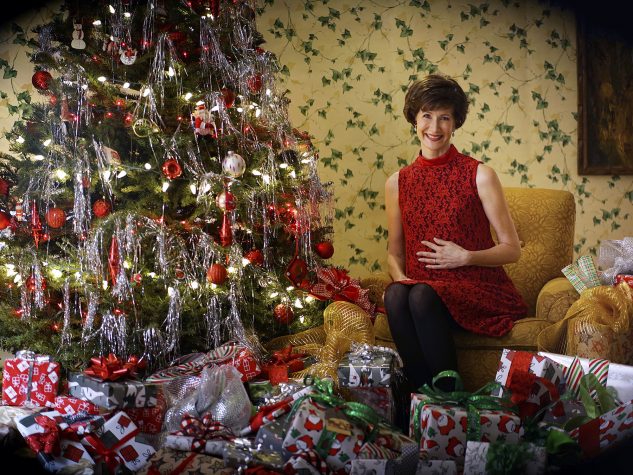Model Home
Step into photographer Jona Frank’s beautiful yet troubled suburban childhood in a new exhibition at Bowdoin College Museum of Art.
“You can’t go home again.” So said Thomas Wolfe, and photographic artist Jona Frank has been saying the same thing with her work for some 20 years. Longer even, if you start from the moment she began developing pictures. In her senior year of high school, Frank took a basic black-and-white photography class—the first time any adult had trusted her to hold a camera—and describes the experience of transferring the images floating in front of her onto paper as “a quantum breakthrough,” adding, “I could see my future.”
Frank was born in 1966, the fourth child and only girl to a mother who claimed she “actually heard bells” when Frank’s father asked her to marry her. Her parents were the first owners of a classic, post–World War II home in Cherry Hill, New Jersey. To Frank’s mother, the modern colonial and the accompanying sheltered lifestyle meant that she had “arrived” as a person—she felt the four walls in which she raised her family were all she could ever want or need. That is, if everyone under the roof lived up to her expectations. For Frank, who spent her childhood never quite measuring up—not ladylike enough, too sensitive, prone to daydreaming—Cherry Hill became a sort of jail, one she realized she would have to escape if she could ever hope to find herself.
This youthful search is the subject of Frank’s 2020 book Cherry Hill (Monacelli Press), a coming-of-age memoir that, with its combination of artfully composed personal essays and striking anamorphic lens photography, reads like a graphic novel. Frank, who lives in Santa Monica, cast her longtime friend, the actress Laura Dern, as her repressive mother, and a group of girls and women play young Frank as she grows from child to teen, in photos that Frank takes in sets that are built to look just like her Cherry Hill home. Frank has long explored youth culture and identity narratives in her work—her 2015 book The Modern Kids is about an amateur boxing club outside of Liverpool, England—but this is the first time the artist has turned the lens on herself. “It was what I did, but it was not what I did,” she says. “It was sort of turning everything on its side.”
Now, in a new exhibition at Bowdoin College Museum of Art (BCMA), Jona Frank: Model Home, which runs from February 24 through June 5, 2022, one can, in a sense, step into the book. Collaborating with Alex Kalman, who also completed the book design for Cherry Hill, Frank has installed an immersive environment that will tell her story. Anne Collins Goodyear, codirector of the BCMA, who oversaw the development of the exhibition, has acted as a kind of mentor to Frank over the past 20 years, first during her time at the National Portrait Gallery in D.C. and now in Maine. After seeing the first several images of the Cherry Hill project, Goodyear told the artist that it was her “breakout work,” and that she wanted to be the first to show it.
The first thing a viewer will see upon entering is a model home, the Frank family home, constructed by Bowdoinham-based builder Danae Lagoy in collaboration with Frank. It is a building with no entryway or exit. Inside is a projection of photographs from the artist’s childhood: “The idea being,” she says, “that you can’t return to your childhood. You can return to your hometown, but there is a break. There’s that time in our lives where we leave that aspect behind and we move forward.”
In another room, which Frank is calling The Birthday Installation, a table is set up to look like a little girl’s over-the-top birthday party. There are four cakes on the table decorated by Detroit-based baker Eggy Ding (“which is the best name ever for a baker,” Frank notes) based on Frank’s design. A fifth cake of a “cut-out” young girl was fabricated by Brunswick-based artist Lisa Alonzo. On the top of each cake is a word. When read in a line, the cakes spell out, “You are not enough.” Frank says this deliberately refers to her mother telling her she wasn’t feminine enough, but she also thinks the message is universal. “Everybody carries things from their childhood, where, in one form or another, they were made to feel like they weren’t enough.” Frank wants the viewer to walk into the beautiful scene and then to look more closely, to see that the message itself, the one transferred from parent to child, is confusing.
In all of the galleries are Frank’s photos. Most of them depict Dern’s dazzling embodiment of “mother,” but in one gallery Frank collects images from her past, photos she took on road trips during her 20s, what she calls her “self-discovery” period. “A campus art museum is the perfect place to show Model Home,” she says. “It’s so much about what the students are beginning to confront, as they are one foot in childhood and one foot in adulthood, and they’re beginning to get out there; that’s what the exhibition is.”





